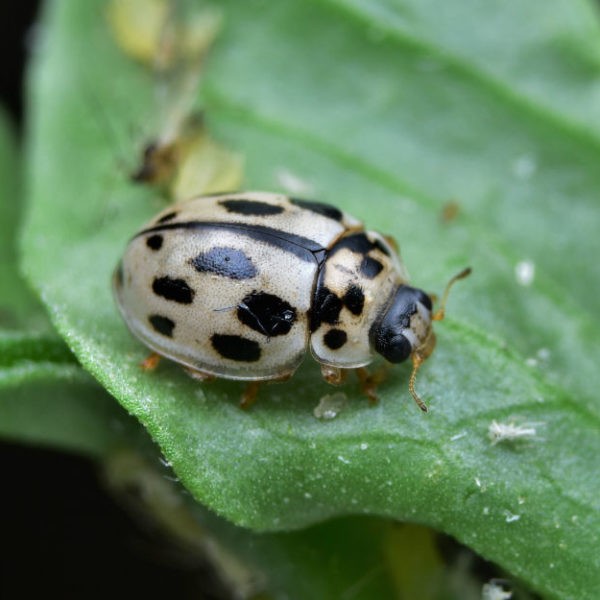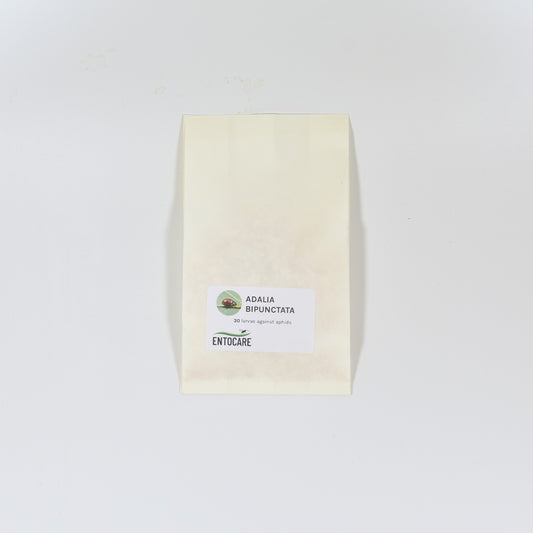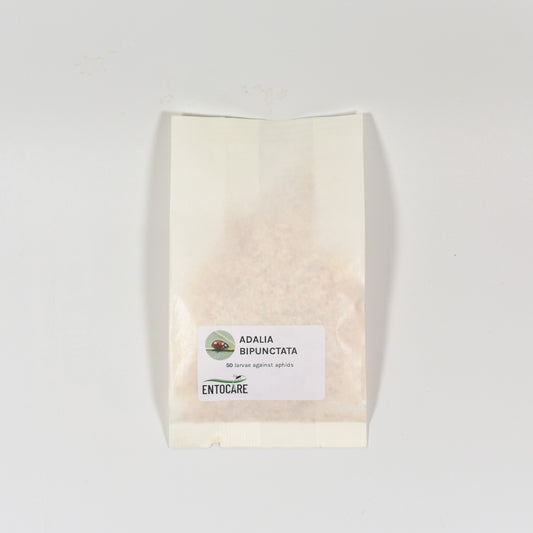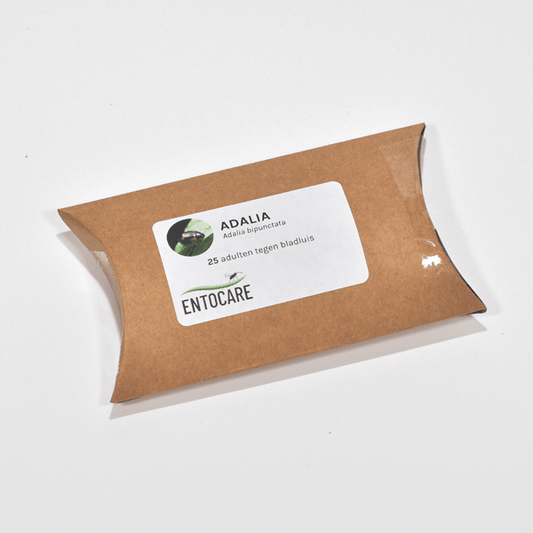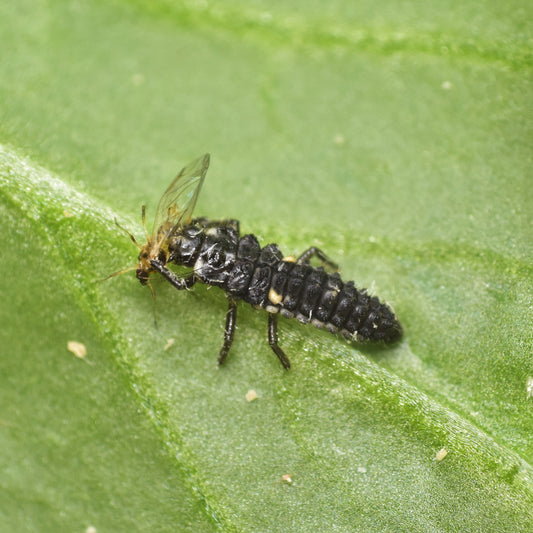Entocare
PROPYLEA QUATUORDECIMPUNCTATA ladybirds - 100
PROPYLEA QUATUORDECIMPUNCTATA ladybirds - 100
against aphids
PROPYLEA QUATUORDECIMPUNCTATA is an indigenous ladybird that can be released in early spring to control aphids in greenhouse vegetable cultivation. The predatory beetle has a preference for foxglove aphid, but also feeds on other aphid species. PROPYLEA QUATUORDECIMPUNCTATA is available in units of 100 adult beetles, packaged in cardboard containers. This product is available for business customers only.
Specificaties
Specificaties
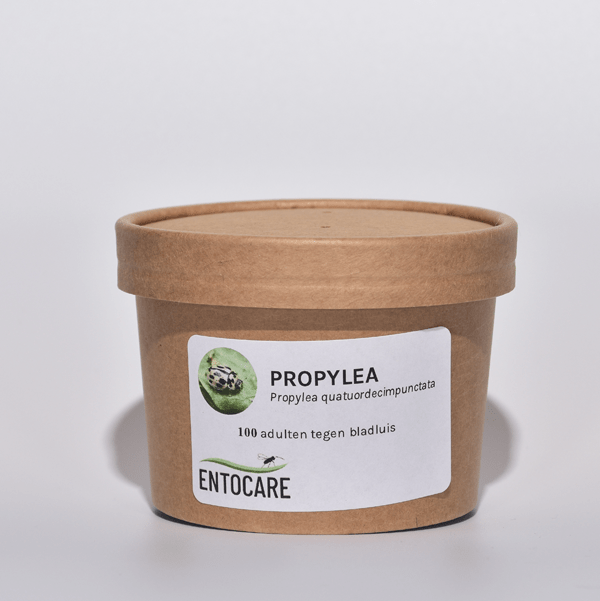
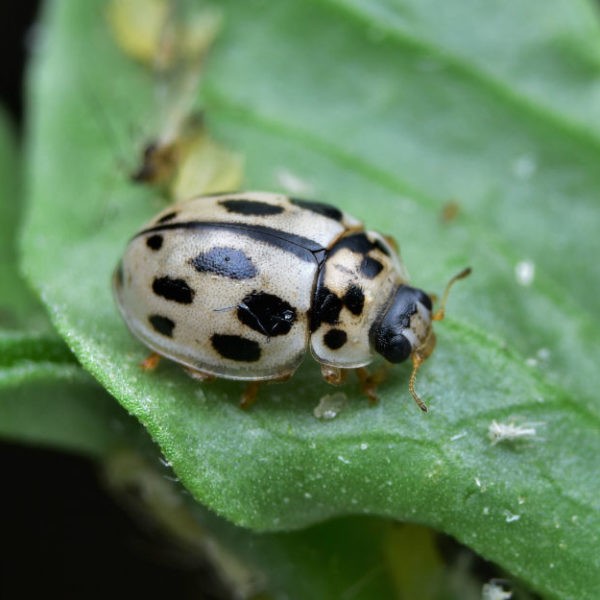
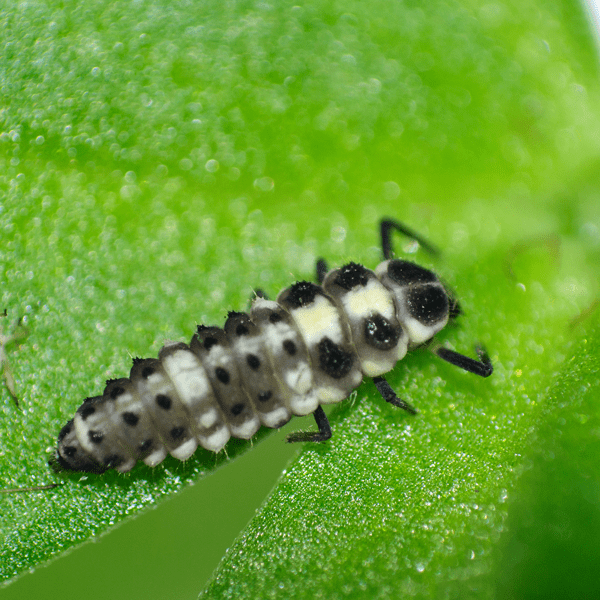
What is PROPYLEA QUATUORDECIMPUNCTATA?
PROPYLEA QUATUORDECIMPUNCTATA is the indigenous 14-spotted ladybird. The predatory beetles are yellow with numerous black squares on the cover shields. Hence their name. The larvae are slender and grey with yellow patches and black dots.
How does PROPYLEA QUATUORDECIMPUNCTATA work?
Both the adult beetles and the larvae are very mobile. They run around the plants in their search for food. They feed on different aphid species; such as foxglove aphid; green peach aphid and yellow rose aphid. PROPYLEA QUATUORDECIMPUNCTATA are active already early in spring. PROPYLEA is very effective at low temperatures in the greenhouse and is therefore able to prevent an aphid outbreak later in the season. Therefore we recommend to release them early in the season; so they are present in the crop before the aphid population drastically increase. The beetles can establish themselves in the greenhouse.
PROPYLEA QUATUORDECIMPUNCTATA is voracious and completely devours the aphids.
How to combine PROPYLEA QUATUORDECIMPUNCTATA?
This predatory beetle is great in combination with parasitoids; such as APHIPAR and APHILIN. The parasitoids are great searchers and target the more dispersed aphids.
![]()
In greenhouses: March - June
![]()
T = 15°C or higher
![]()
RH = 50 - 80%
![]()
vegetable production, ornamental production
Preventive: 0,1 - 0,2 per m².When aphids are present: 0,2 - 0,5 per m².Repeat 2-3 times.
- Open the package with the adult predatory beetles in the greenhouse and place it near an aphid hot spot.
- You can also manually spread the cardboard with the beetles over the crop.
-
ADALIA larvae - 30
Regular price €10,60 EURRegular priceUnit price / per -
ADALIA larvae - 50
Regular price €20,00 EURRegular priceUnit price / per€20,00 EURSale price €20,00 EUR -
ADALIA ladybirds - 25
Regular price €27,25 EURRegular priceUnit price / per€0,00 EURSale price €27,25 EUR -
ADALIA larvae - 100


